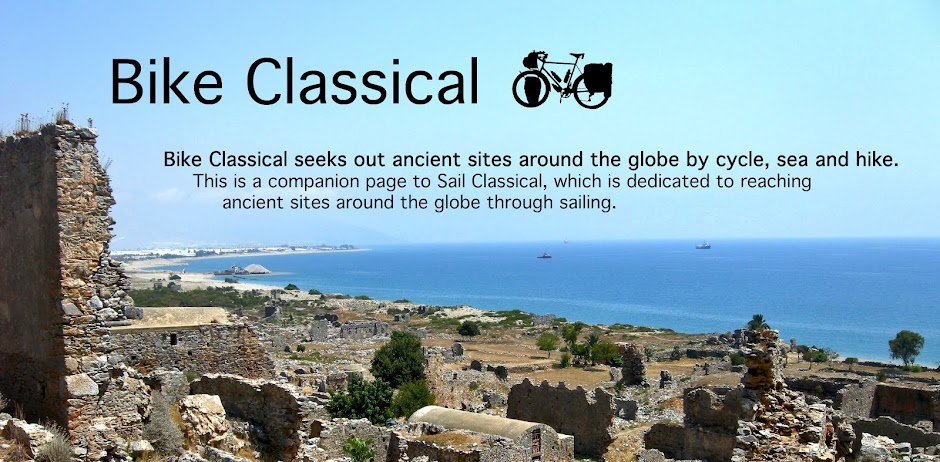Photos by Jack A. Waldron
Following the Demre River from where it meets the sea at Andriake (the port and site of Hadrian's granary), up through the fertile valley past the ancient city of Cyaneae, one arrives at the site of ancient Phellos. Wishing to have their own port independent from the ports at Myra, Andriake or Sura, Phellos established Antiphellos, meaning, in front of Phellos. Pictured above, the Hellenistic theater (restored) at the site of Antiphellus, modern day Kos.
This is my second time to visit Kos, and I have more complete photos of the theater as it appeared in 2005, prior to its restoration. Those photos are on film, and must be scanned and added to this post in the future . . . , yet another future project.
The one photo I have already scanned from 2005 (pictured above) is on the rooftop of the pension where I stayed. I cooked a whole chicken to share with new acquaintances, and ended up on a new friends sailboat at 3:00 am the following morning on my way Fethiye. Over weight and computer bound, I started tour cycling to address my growing physique. I stopped by the pension to say hello to the owners in 2015, an old couple who said they remembered me . . .
According to Pliny the elder, the Lycian port town was named Habessus during pre-Hellenic times, and was famous for the quality of the sponges fished from the local seas. 4C BC inscriptions in the Lycian B language have been identified around the site. Upon exploration by Sir Charles Fellows in 1840, an ancient Greek inscription was found containing the name Antiphellus. Furthermore, post-Hellenic Roman era coins from the city contain the name Antiphellus. What is fascinating with regard to the name of the site, is that prior to the forced population exchange between Greece and Turkey in 1922-23, the city was known as Andifili, which is near in pronunciation to the cites ancient name, but not as close as its 19C AD name, Andiffelo. Pictured below, the outer wall of what was once thought to be a Hellenistic temple, but is now described as a 4C BC monumental tomb.
Pictured above and below, the interior of the 4C BC tomb. Evidenced by the building of such structures during this period, Antiphellus grew in importance, while Phellus saw its inhabitants gravitate more and more to the prosperous port city.
Lycian sarcophagi can be found in and around Kos, though the British explorers did remove antiquities to England for display. The drawing (pictured below) of Graves' crew dismantling the Tomb of Payava at Xanthus for display at the British Museum in London is one of numerous examples of antiquities export during this period. The Kings's Tomb (also pictured below) in Kos (Antiphellus) bares a striking similarity to the drawing.
Pictured above, a close shot of the Lycian inscription on the base of the King's Tomb. Below, a rock face tomb on the cliff that rises above the city. This tomb was illustrated during Spratt's expedition to Lycia (pictured further down).
The tomb pictured above is situated atop the acropolis behind the theater, and was honed from the solid rock that comprises the hill. Though the ancient site of Antiphellus is almost completely covered by modern Kos, if one takes the time to walk, hike and climb around the city, the antiquities show themselves, and offer a good understanding of the ancient city.
*All photos and content property of Jack A. Waldron (photos may not be used without written permission)
**If you'd like to help with future postings, please feel free to support them through PATREON:















